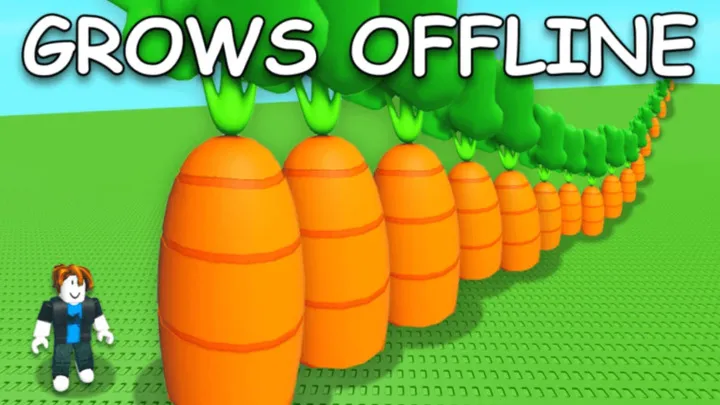Introduction
Creating and maintaining a beautiful garden is one of the most rewarding hobbies you can pursue. Whether you are growing flowers, vegetables, herbs, or simply designing a relaxing outdoor sanctuary, gardening combines creativity, patience, and practical knowledge. A garden does more than beautify your surroundings—it provides fresh produce, supports biodiversity, and promotes mental well-being.
In this comprehensive guide, we will cover the essential tips and strategies to help you successfully grow and care for your garden. From preparing the soil to harvesting crops, each step is crucial in building a thriving green space. Whether you are a beginner or an experienced gardener looking to refine your skills, this guide will provide actionable advice that ensures your garden flourishes season after season.
1. Planning Your Garden
Before you plant a single seed, planning is the cornerstone of successful gardening. A well-thought-out plan saves time, resources, and frustration later on.
First, decide on the purpose of your garden. Do you want a vegetable garden for fresh food, a flower garden for aesthetics, or a mixed space combining both? Once you establish your goal, sketch out a layout on paper or use garden design software. Factor in sunlight exposure, wind direction, water access, and the available space.

Another important consideration is climate and seasonality. Research your region’s hardiness zone, average rainfall, and temperature fluctuations to choose plants that thrive naturally in your area. Planting species suited to your environment reduces maintenance and increases the likelihood of success.
2. Preparing the Soil
Healthy soil is the foundation of any productive garden. No matter how carefully you plan, poor soil conditions can sabotage your efforts.
Begin by testing your soil’s pH and nutrient content. Many home improvement stores sell affordable testing kits, or you can send samples to agricultural extension services for detailed results. Most vegetables prefer slightly acidic to neutral soil (pH 6–7), while some plants, like blueberries, thrive in more acidic conditions.
After testing, enrich the soil with organic matter such as compost, aged manure, or leaf mold. These amendments improve structure, water retention, and nutrient availability. If your soil is heavy clay, incorporate sand and compost for better drainage. For sandy soil, add compost and organic mulch to help retain moisture.
3. Choosing the Right Plants
Selecting plants wisely ensures your garden’s success and reduces unnecessary maintenance.
Start with plants that match your climate, soil type, and available sunlight. For beginners, hardy and resilient varieties such as tomatoes, zucchini, marigolds, and basil are excellent choices. If your garden is shaded, opt for lettuce, spinach, ferns, or hostas, which tolerate less sunlight.
It’s also important to consider the growth habits of your chosen plants. For example, sprawling vines like pumpkins need more space, while vertical growers like pole beans can save space by climbing trellises. Mixing annuals and perennials creates balance: annuals provide fast rewards, while perennials return year after year with minimal effort.
4. Planting Techniques
Even the best seeds and soil won’t guarantee success without proper planting techniques.
Always read seed packets or plant labels for spacing, depth, and light requirements. Overcrowding can lead to disease, poor airflow, and competition for nutrients. As a rule of thumb, sow seeds at a depth about twice their size, and give seedlings enough room to spread without shading each other out.
Companion planting is another strategy to maximize productivity. Certain plants, when grown together, improve growth or deter pests. For example, planting basil near tomatoes enhances flavor and repels insects, while marigolds release natural chemicals that deter nematodes.
Mulching after planting helps regulate soil temperature, suppress weeds, and retain moisture. Organic mulch like straw, shredded leaves, or wood chips breaks down over time, enriching the soil further.
5. Watering and Irrigation
Water is essential, but overwatering or underwatering can both harm plants.
The best approach is deep, infrequent watering rather than shallow, frequent watering. Deep watering encourages roots to grow deeper, making plants more resilient to drought. Most gardens need about one inch of water per week, either from rainfall or supplemental irrigation.

Install a drip irrigation system or soaker hoses to deliver water directly to the root zone while minimizing evaporation. Early morning watering is ideal, as it allows foliage to dry before nightfall, reducing the risk of fungal diseases. Avoid overhead watering during hot afternoons, which can shock plants and waste water through evaporation.
6. Fertilizing for Growth
Plants need nutrients to thrive, and even the richest soil benefits from occasional fertilization.
Use organic fertilizers like compost tea, fish emulsion, or bone meal for slow, steady nutrient release. Synthetic fertilizers can provide quick results but should be used sparingly to avoid burning plants or disrupting soil microbiota.
Different plants require different nutrients. Leafy greens thrive on nitrogen-rich fertilizers, while fruiting crops like tomatoes and peppers benefit more from phosphorus and potassium. A balanced approach, alternating organic compost with targeted fertilizers, ensures steady, healthy growth.
7. Pest and Disease Management
Every gardener faces pests and diseases, but smart management can keep problems under control.
Start with prevention: healthy plants are more resistant to attack. Rotate crops each season to prevent pests from building up in the soil. Attract beneficial insects such as ladybugs and lacewings by planting nectar-rich flowers like dill and cosmos. These natural predators keep aphids, mites, and caterpillars in check.
For direct control, try organic methods first. Neem oil, insecticidal soap, and diatomaceous earth are effective against many pests without harming pollinators. For fungal diseases, remove affected leaves promptly and apply copper-based fungicides if necessary. Always avoid excessive pesticide use, which can harm beneficial organisms and reduce biodiversity.
8. Seasonal Care and Maintenance
Gardens are dynamic, changing with the seasons. Proper care throughout the year keeps your plants healthy and productive.
In spring, focus on soil preparation, planting, and early weeding. Summer requires vigilant watering, mulching, and pest control, as growth accelerates. In fall, harvest crops, plant cover crops like clover to restore nutrients, and clean up debris to prevent overwintering pests. Winter is the time to prune dormant perennials, sharpen tools, and plan next year’s layout.
Consistent maintenance tasks include deadheading flowers, thinning seedlings, and monitoring for early signs of disease. These small actions make a big difference in long-term garden success.
9. Harvesting and Storage
Harvesting at the right time ensures maximum flavor and nutritional value.
Vegetables like cucumbers and zucchini should be picked young and tender, while root crops such as carrots and beets taste best when fully developed. Herbs are most flavorful before flowering, so harvest leaves regularly to encourage new growth.

Proper storage extends the life of your harvest. Leafy greens keep well in the refrigerator wrapped in damp paper towels, while root vegetables store best in cool, dark cellars. Freezing, drying, and canning are excellent preservation methods for long-term use.
10. Enhancing Your Garden with Design and Creativity
A garden is not just functional; it can also be a source of beauty and relaxation.
Incorporate design elements like pathways, raised beds, and decorative borders to make your garden both practical and visually appealing. Add seating areas, trellises, or water features for a tranquil atmosphere. Lighting can extend garden enjoyment into the evening, while colorful pots and ornaments add personality.
Consider biodiversity as part of your design. Planting pollinator-friendly flowers, building birdhouses, or creating a small pond enhances ecological balance while enriching your outdoor space.
Conclusion
Growing a garden is both an art and a science. From the earliest stages of planning and soil preparation to harvesting and creative design, each step contributes to a thriving, sustainable space. By choosing the right plants, using effective planting techniques, managing water, and caring for soil health, you set the stage for success. Regular maintenance, pest management, and seasonal adjustments ensure long-term productivity.
Gardening requires patience, but the rewards—fresh food, natural beauty, and personal satisfaction—are worth every effort. Whether your goal is practicality, aesthetics, or both, these tips and guides will help you grow a garden that flourishes year after year.

















